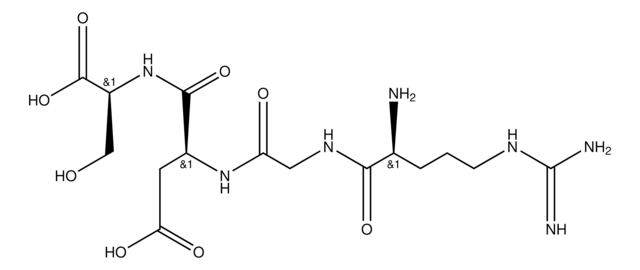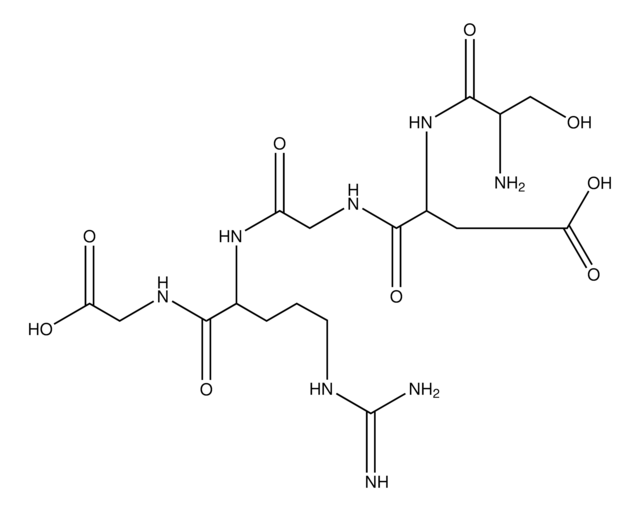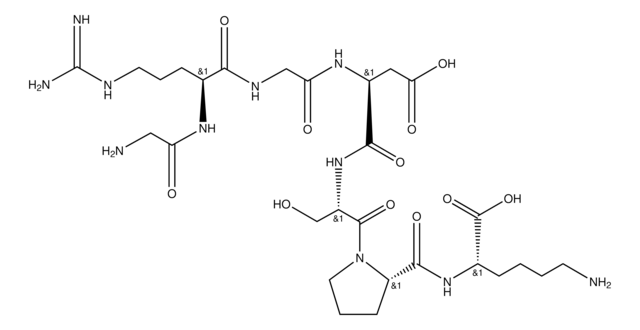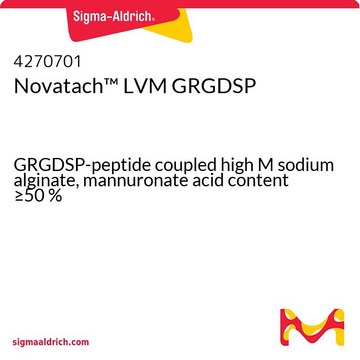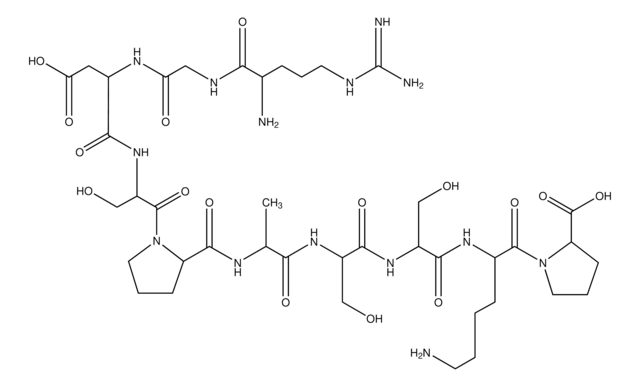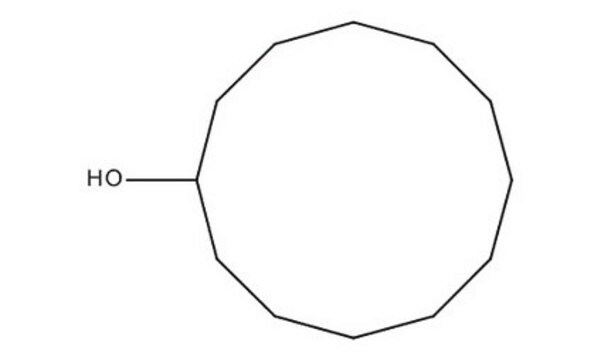G4391
Gly-Arg-Gly-Asp-Ser
≥97% (HPLC)
About This Item
Prodotti consigliati
Saggio
≥97% (HPLC)
Forma fisica
powder
Composizione
Peptide content, ≥60%
tecniche
blocking: suitable
cell culture | mammalian: suitable
Temperatura di conservazione
−20°C
Stringa SMILE
NCC(=O)N[C@@H](CCCNC(N)=N)C(=O)NCC(=O)N[C@@H](CC(O)=O)C(=O)N[C@@H](CO)C(O)=O
InChI
1S/C17H30N8O9/c18-5-11(27)23-8(2-1-3-21-17(19)20)14(31)22-6-12(28)24-9(4-13(29)30)15(32)25-10(7-26)16(33)34/h8-10,26H,1-7,18H2,(H,22,31)(H,23,27)(H,24,28)(H,25,32)(H,29,30)(H,33,34)(H4,19,20,21)/t8-,9-,10-/m0/s1
RGNVSYKVCGAEHK-GUBZILKMSA-N
Informazioni sul gene
human ... ITGB3(3690)
Cerchi prodotti simili? Visita Guida al confronto tra prodotti
Amino Acid Sequence
Descrizione generale
Applicazioni
- as an antigen to determine whether integrin α4 or α5 hinders the adhesion of day 3 postirradiation thymocytes to thymic epithelial cells, in mice
- for the treatment of collagen IV-coated dishes to study the role of integrins α1, αv, β1, and β3 in Sca-1+ progenitor cell differentiation into SMCs (smooth muscle cells)
- as a blocking peptide for the pre-incubation of Nisseria meningitides strains, to perform blocking experiments to study the interactions between these bacterial strains and fibronectin
- for the pre-treatment of EL-4 cells infected by AdCMV-GFP (cytomegalovirus-green fluorescent protein), to study whether interaction with cellular integrins is essential for the transduction of adenovirus
Azioni biochim/fisiol
Codice della classe di stoccaggio
11 - Combustible Solids
Classe di pericolosità dell'acqua (WGK)
WGK 3
Punto d’infiammabilità (°F)
Not applicable
Punto d’infiammabilità (°C)
Not applicable
Dispositivi di protezione individuale
Eyeshields, Gloves, type N95 (US)
Certificati d'analisi (COA)
Cerca il Certificati d'analisi (COA) digitando il numero di lotto/batch corrispondente. I numeri di lotto o di batch sono stampati sull'etichetta dei prodotti dopo la parola ‘Lotto’ o ‘Batch’.
Possiedi già questo prodotto?
I documenti relativi ai prodotti acquistati recentemente sono disponibili nell’Archivio dei documenti.
I clienti hanno visto anche
Il team dei nostri ricercatori vanta grande esperienza in tutte le aree della ricerca quali Life Science, scienza dei materiali, sintesi chimica, cromatografia, discipline analitiche, ecc..
Contatta l'Assistenza Tecnica.
